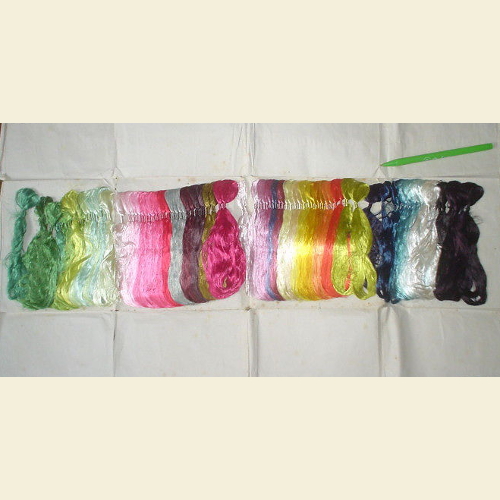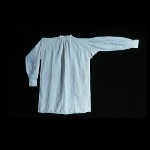Artifact: Silk Skeins (Hanks)

Materials: Silk
Dimensions: Height: 14 cm average
Date: ca. 1840s
Origin: China
Collection: Victoria & Albert Museum
Ledger Entry: Hank of Silk

Department: Textile
Customer: Mahlone Janey
Ledger Page: 111
Imported From: Since attempts to produce silk in the American colonies met with limited success, most silk in the eighteenth century was imported from Asia through English suppliers.
Product Description
Made from fibers found in the cocoons of silkworms, silk threads can be spun extremely fine and still remain strong. Silk thread was sold by the hank for use in embroidery, a popular means of decorating clothing, footwear, furnishings, and many other textile products. Because of its softness and luster, as well as the difficult process and limited resources, silk was a luxury commodity for colonial consumers as it remains for us today. In addition to hanks of silk thread, Ramsay also sold silk textiles of various types such as Persian, Crape, and Allamode by the yard.
Citation: Smith, Gideon B. “Treatise on the Culture of Silk.” Southern Agriculturist and Register of Rural Affairs (1828-1839) Jun 1839; 12, 6; Adrienne D. Hood The Weaver's Craft: Cloth, Commerce, and Industry in Early Pennsylvania. (Philadelphia: University of Pennsylvania Press, 2003), 137.
Historical Price: 9 pence per hank; Modern USD: $8.41
Product Variations
The databases record fourty four purchases of hanks of silk. The silk purchases are not identified with qualifiers indicating quality or type, though six are identified as black silk. The prices range from four pence to two shillings six pence per hank.






